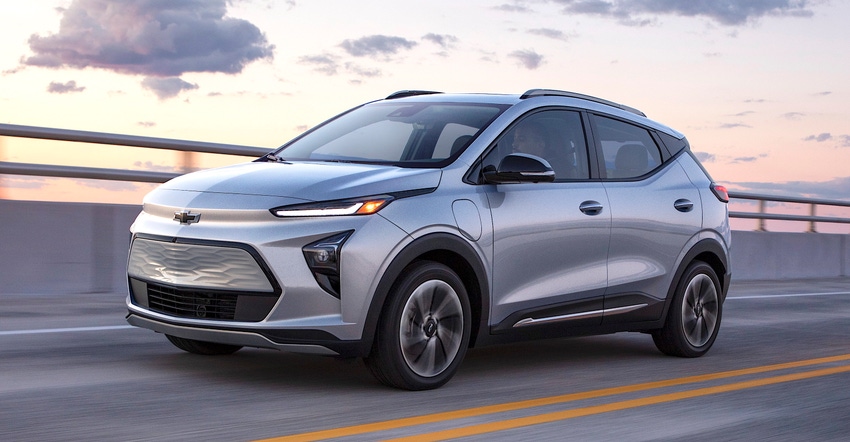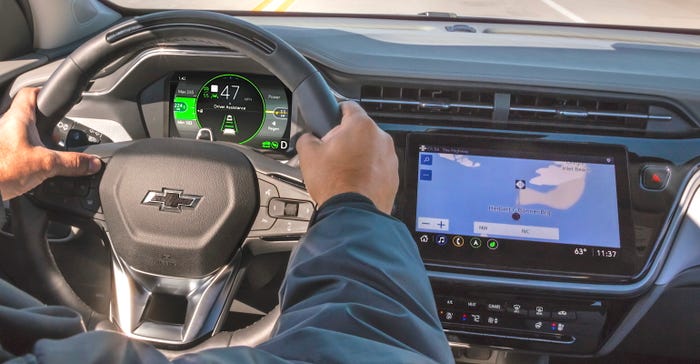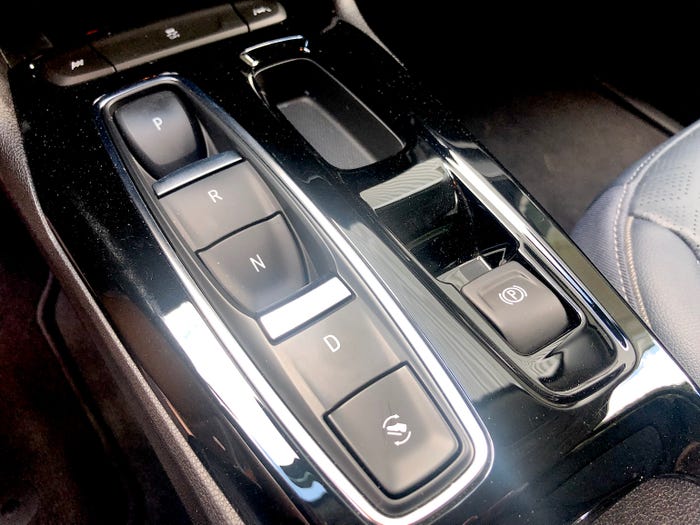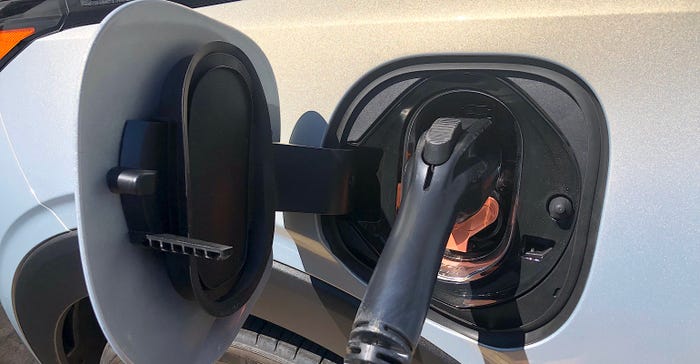The Chevrolet Bolt EUV's tall hatchback body style is meant to attract SUV intenders with its cavernous cargo space.

Subaru struck gold when it jacked up its compact hatchback and badged it as the rough-and-ready-sounding Crosstrek, so it makes sense that Chevrolet would take a similar approach for its dowdy Bolt EV.
Unfortunately, a roof rack and knobby off-road-style tires are counterproductive for electric driving range, so while the Chevrolet Bolt EUV (electric utility vehicle, get it?) is taller than the regular Bolt, it still has the slippery appearance of an EV rather than the brash look of an off-roader.
The Bolt is GM’s outgoing electric vehicle technology, as it shifts to the Ultium electric drive system across its model lines. But even less-than-cutting edge technology can deliver an appealing package, especially in light of Chevy’s price cut for 2023 which sliced $5,000 off the base price of our tested Bolt EUV Premier, bringing that number to $32,695. The test car’s bottom line added another $6,000 in options such as the panoramic sunroof and the delivery charge. Frugal buyers will note that the Bolt EUV LT starts at $28,195.
The car’s drivetrain and sleek aerodynamics combine to deliver an impressive 247-miles estimated electric driving range on the car’s 65-kilowatt-hour lithium-ion battery pack. Recent moderate weather contributed to the car’s computer showing more than 280 miles of estimated driving range on a fully-charged battery, with the potential for the car to travel as far as 330 miles if driven gently.
An upgraded 11.5 kW on-board charger lets the Bolt charge on a home Level 2 AC charging station in just seven hours, charging at a rate of about 37 miles of range per hour. The car’s charge port is noteworthy for having weather sealing on the cover door. This saves the driver the nuisance of having to remove a cover from the L2 AC charge port for daily charging at home or work. The SAE CCS Combo port for DC fast charging does have its own cover, but that port is used much less frequently, so this is no hardship.

The Bolt EUV drives pleasantly, though it will not be mistaken for a sports car. The steering feels a bit numb, but it is accurate, keeping the car placed where intended, unlike the BMW iX, which seems to wander randomly in the lane. The electric motor is 200 horsepower, so acceleration is decent. It seems more so when the “Sport” mode button is pressed, which remaps the response to the accelerator pedal so that it cranks up the power more quickly when the driver steps on the pedal.
Unlike many EVs, the Bolt EUV’s mass isn’t exorbitant, with its battery contributing 947 lbs. to the car’s 3,715 curb weight. It is heavy, but isn’t a tank.
Another button on the Bolt’s console that is more useful is the one that engages heavy regeneration to provide one-pedal driving. As employed in the Bolt, this is true one-pedal that brings the car to a complete stop, relieving the driver who watches ahead from the need to use the brake pedal in most situations.

The Bolt uses a shifter comprised of a row of switches that each change the state of the car’s drive system. This system doesn’t require the driver’s foot to be on the brake pedal or for the car to be completely stopped to shift, recognizing the way that people actually drive, switching from Reverse to Drive while the car is still rolling slightly. This is good, however, the lift-up switch for engaging Drive is right next to an identical one for the parking brake.
All of these pushbutton shifters suffer the problem of taking the driver’s eyes off the road to make shifts, unlike traditional PRNDL shifters that slide through discrete positions the driver can feel without looking. Shifting into Drive without looking in the Bolt is a good way to accidentally activate the parking brake instead.
The Bolt EUV is probably the most affordable vehicle on the road to offer SAE Level 2 hands-off driving assistance. The GM Super Cruise system is well regarded for the company’s responsible restriction of its use only to appropriate mapped limited-access highways and for its use of a camera on the steering column that ensures the driver’s eyes remain on the road.

Activating the system is simple and convenient, making it easy to engage, and I experienced none of the bouncing off the sides of the lane demonstrated by Ford’s BlueCruise when I most recently drove a Mustang Mach-E EV. However, Super Cruise struggled to make curves, even on wide highways with the cruise control set at the speed limit. At times it made worrisome ragged turns and other times it failed to make the turn and disengaged abruptly.
The system also seemed to lose sight of lane markings and disengage when driving through deep shadows under an overpass. I experienced multiple disengagements during a fairly short section of highway that would make the system useless on a trip if it continued to have problems at this rate.
Skipping the option package that adds Super Cruise and the sunroof would bring the Bolt’s price down to its very appealing base price (plus the destination charge), which makes the car a solid value.
About the Author(s)
You May Also Like





